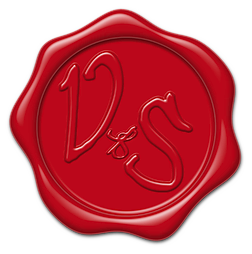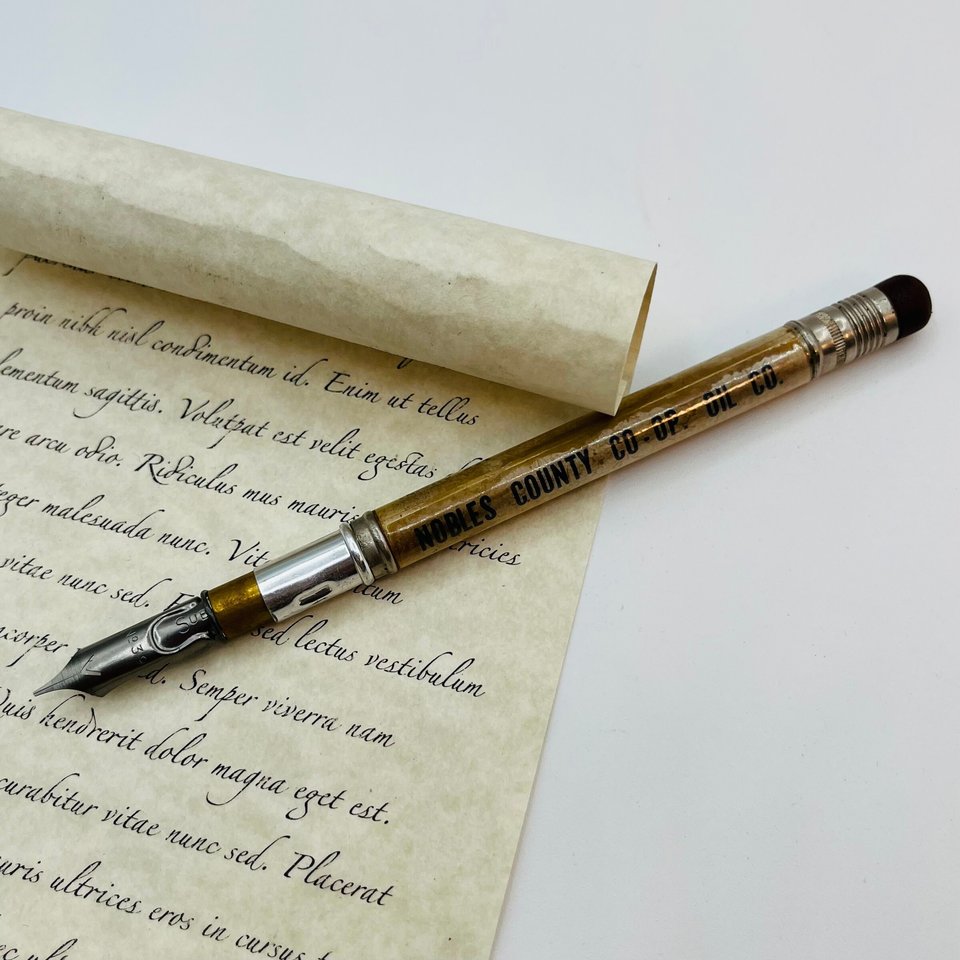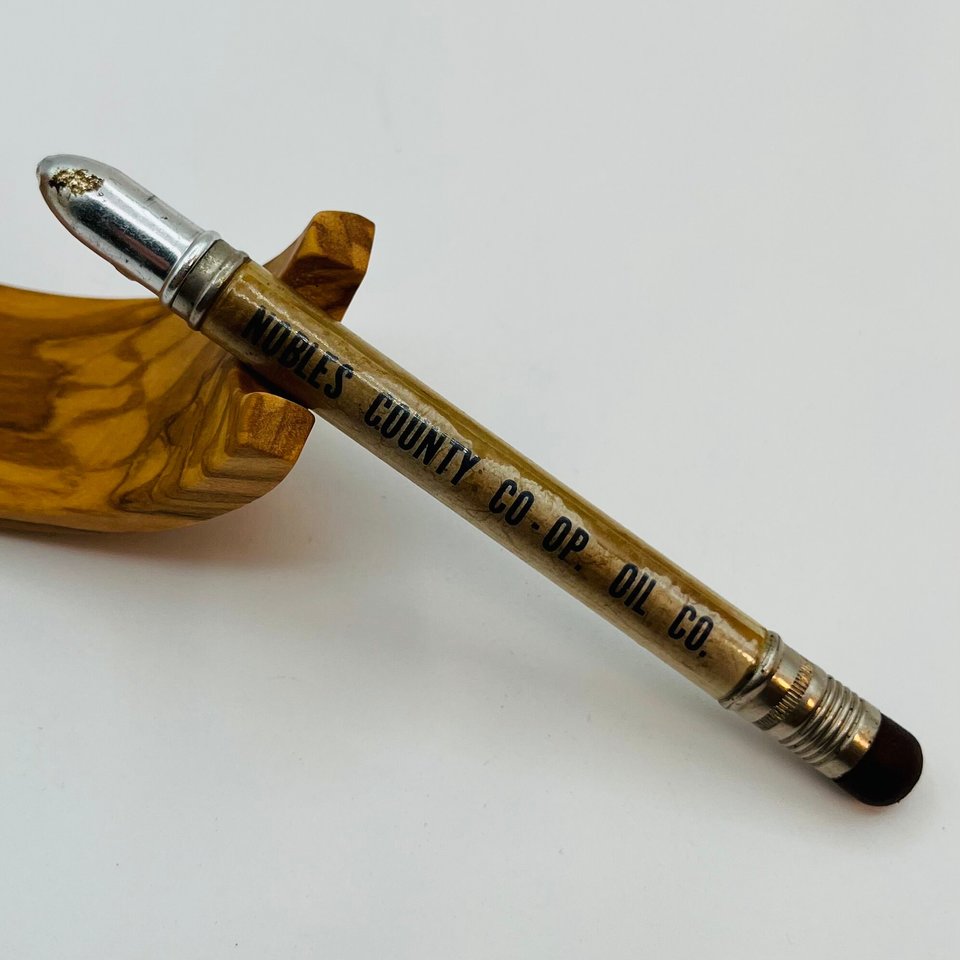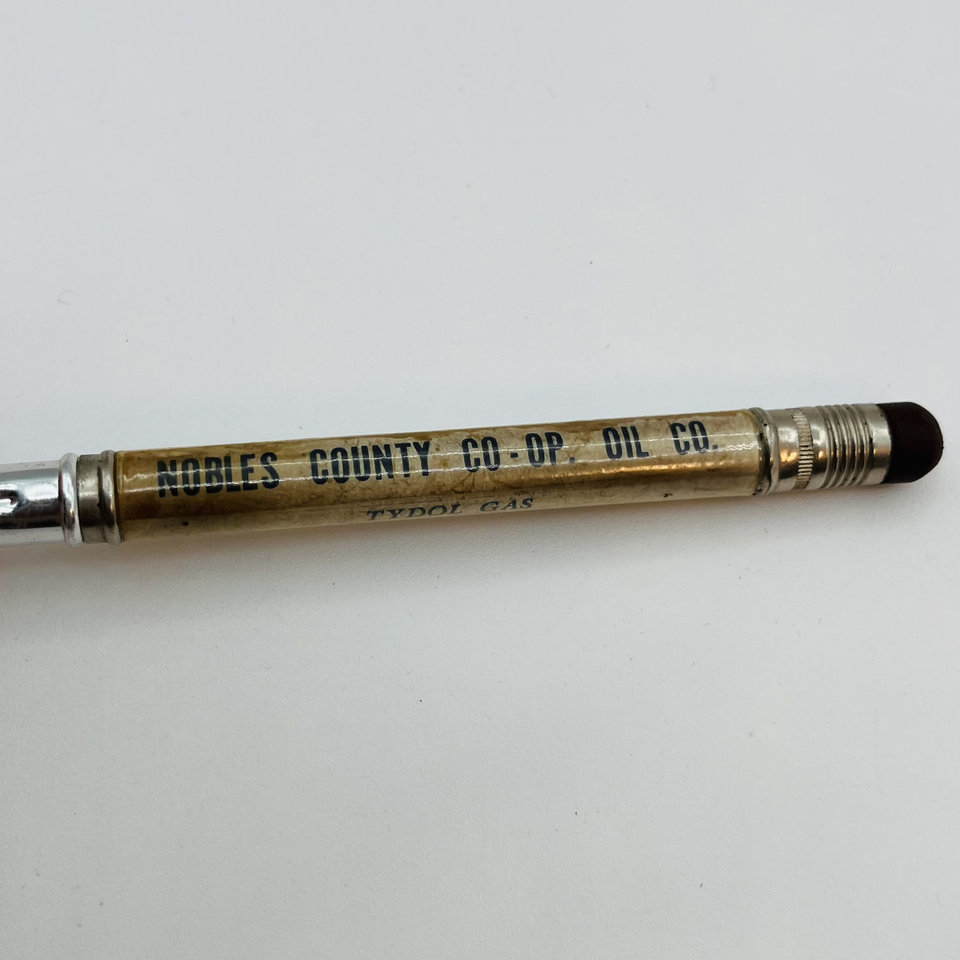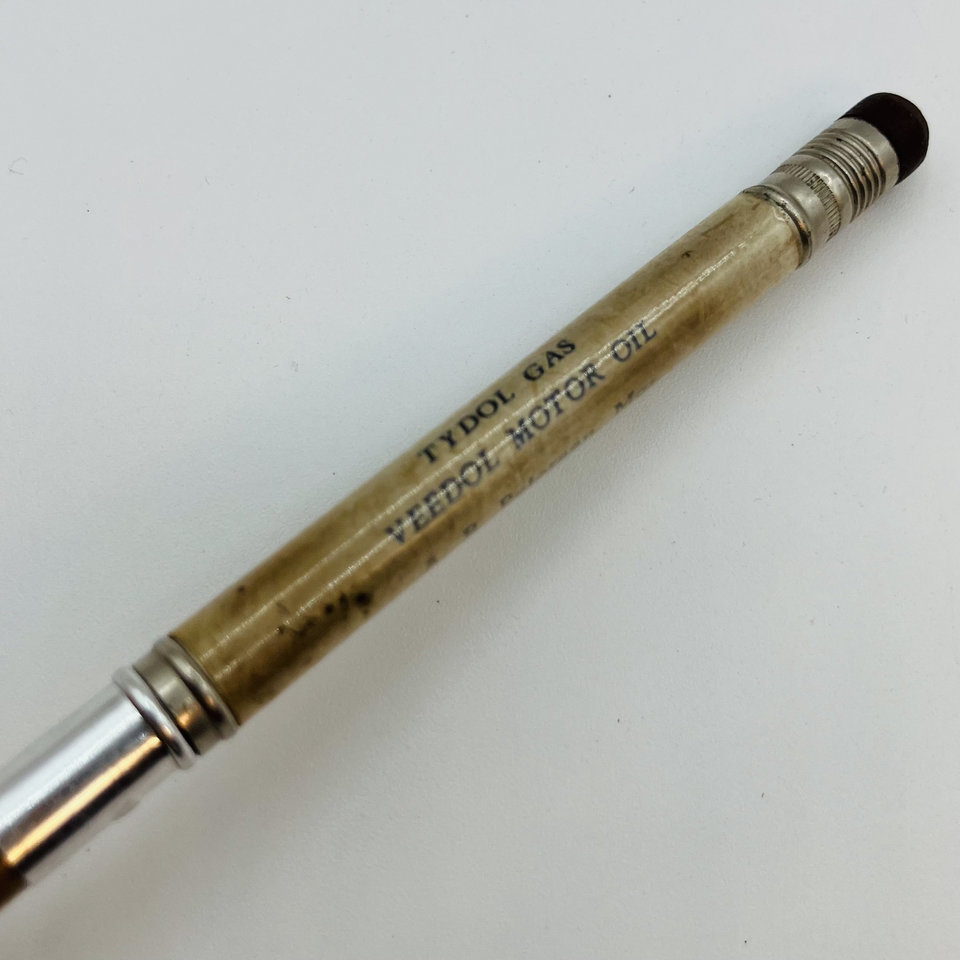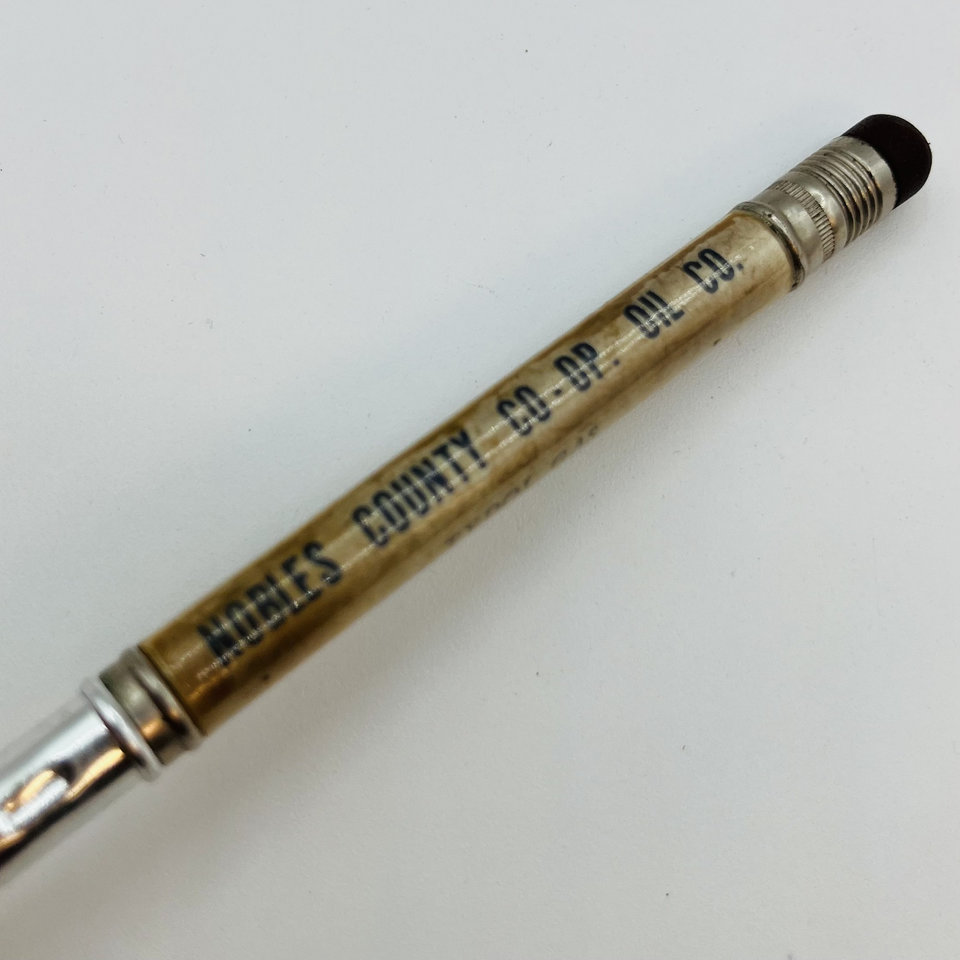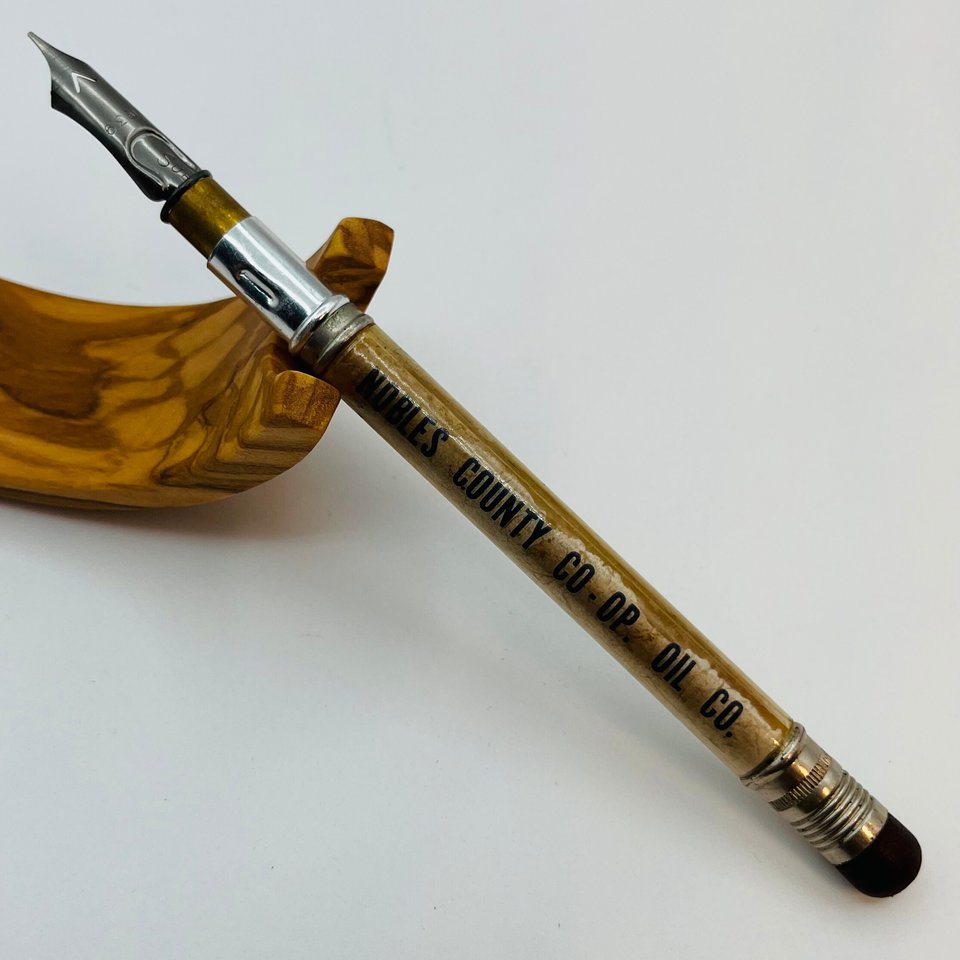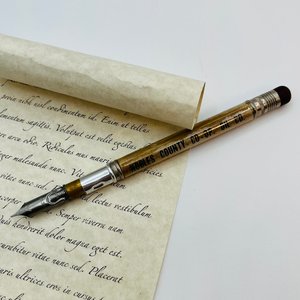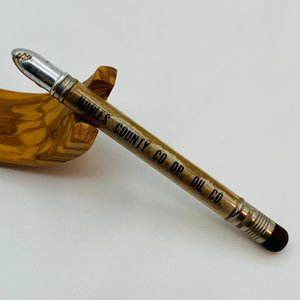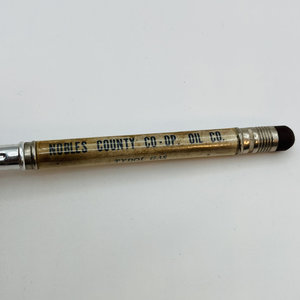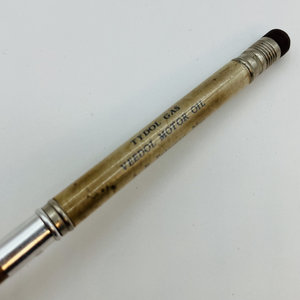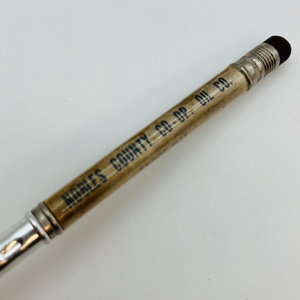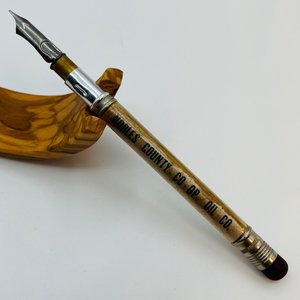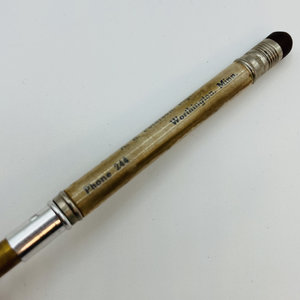Bullet Quill Advertising Pencil Retrofit - Nobles County CO-OP
$68.00
FREE SHIPPING!
An original souvenir or advertising dip pen produced between 1930 and 1960. Features the classic flip design with a changeable vintage nib. The nib included with the pen is a original, new-old stock Spencerian Subway Stub (medium point) produced in the early 1900's.
The vintage dip pen comes in a gift box and includes a protective sleeve to store the pen in and a small bottle of our Black India Ink that can double as an inkwell for travel writing.
DETAILS
Pen Length Open: 5.5"
Pen Length Closed: 4"
HISTORY OF BULLET PENS / QUILLS
Bullet pens and pencils are, as the name suggests, writing instruments whose casings are made from spent rifle cartridges. They originated as "trench art" made by soldiers on battlefields in the early nineteenth century, and were sent home to family and friends or sold as souvenirs.
As British colonialism spread in Africa, the industry of battlefield souvenirs boomed. Opportunistic scavengers-turned-entrepreneurs picked over battlefields, stepping around the bodies of fallen soldiers, in order to retrieve the bullet casings. They were then sent back to England in bulk to be cleaned up, manufactured into cheap writing instruments, and sold to anyone who wanted their very own piece of the action.
The early models were made by soldering a holder for a nib or pencil to the bullet end of the cartridge that could be flipped around to create a larger writing instrument. Because they were smaller and ideal for carrying in a pocket on a battlefield they were quite functional and gained great popularity among civilians.
The mass commercial appropriation of the bullet pencil occurred in the United States beginning in the 1930s and continuing through the 1950s. The U.S. versions most closely resembled the original bullet design, half pencil half bullet, except that they didn’t use real bullet casings. Rather, manufacturers fashioned pieces of aluminum, brass, or other metals into a bullet shape resembling a .30/06 cartridge. Cheap and plentiful though they were, pencils from this era nonetheless were constructed with such durable materials that many have survived to this day, and are still available for purchase through private collectors.
An original souvenir or advertising dip pen produced between 1930 and 1960. Features the classic flip design with a changeable vintage nib. The nib included with the pen is a original, new-old stock Spencerian Subway Stub (medium point) produced in the early 1900's.
The vintage dip pen comes in a gift box and includes a protective sleeve to store the pen in and a small bottle of our Black India Ink that can double as an inkwell for travel writing.
DETAILS
Pen Length Open: 5.5"
Pen Length Closed: 4"
HISTORY OF BULLET PENS / QUILLS
Bullet pens and pencils are, as the name suggests, writing instruments whose casings are made from spent rifle cartridges. They originated as "trench art" made by soldiers on battlefields in the early nineteenth century, and were sent home to family and friends or sold as souvenirs.
As British colonialism spread in Africa, the industry of battlefield souvenirs boomed. Opportunistic scavengers-turned-entrepreneurs picked over battlefields, stepping around the bodies of fallen soldiers, in order to retrieve the bullet casings. They were then sent back to England in bulk to be cleaned up, manufactured into cheap writing instruments, and sold to anyone who wanted their very own piece of the action.
The early models were made by soldering a holder for a nib or pencil to the bullet end of the cartridge that could be flipped around to create a larger writing instrument. Because they were smaller and ideal for carrying in a pocket on a battlefield they were quite functional and gained great popularity among civilians.
The mass commercial appropriation of the bullet pencil occurred in the United States beginning in the 1930s and continuing through the 1950s. The U.S. versions most closely resembled the original bullet design, half pencil half bullet, except that they didn’t use real bullet casings. Rather, manufacturers fashioned pieces of aluminum, brass, or other metals into a bullet shape resembling a .30/06 cartridge. Cheap and plentiful though they were, pencils from this era nonetheless were constructed with such durable materials that many have survived to this day, and are still available for purchase through private collectors.
